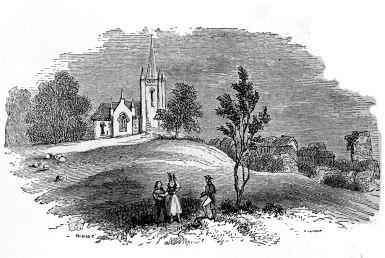Irish Brigade

Site of the Battle of Aughrim
Formation of the Irish Brigade—Violation of the Treaty of Limerick—Enactment of the Penal Laws—Restrictions on Trade—The Embargo Laws—The Sacramental Test introduced—The Palatines—The Irish forbidden to enlist in the Army—Dean Swift and the Drapier's Letters—Attempts to form a Catholic Association—Irish Emigrants defeat the English in France, Spain, and America—The Whiteboys—An Account of the Cause of these Outrages, by an English Tourist—Mr. Young's Remedy for Irish Disaffection—The Peculiar Position and Difficulties of Irish Priests—The Judicial Murder of Father Nicholas Sheehy—Grattan's Demand for Irish Independence—The Volunteers—A Glimpse of Freedom.
[A.D. 1691—1783.]

T. JOHN'S GATE and the Irish outworks were surrendered to the English; the English town was left for the Irish troops to occupy until their departure for France. The men were to have their choice whether they would serve under William III. or under the French. A few days after they were mustered on the Clare side of the Shannon, to declare which alternative they preferred. An Ulster battalion, and a few men in each regiment, in all about 1,000, entered the service of Government; 2,000 received passes to return home; 11,000, with all the cavalry, volunteered for France, and embarked for that country in different detachments, under their respective officers. They were warmly received in the land of their adoption; and all Irish Catholics going to France were granted the privileges of French citizens, without the formality of naturalization. And thus was formed the famous "Irish Brigade," which has become a household word for bravery and the glory of the Irish nation.
